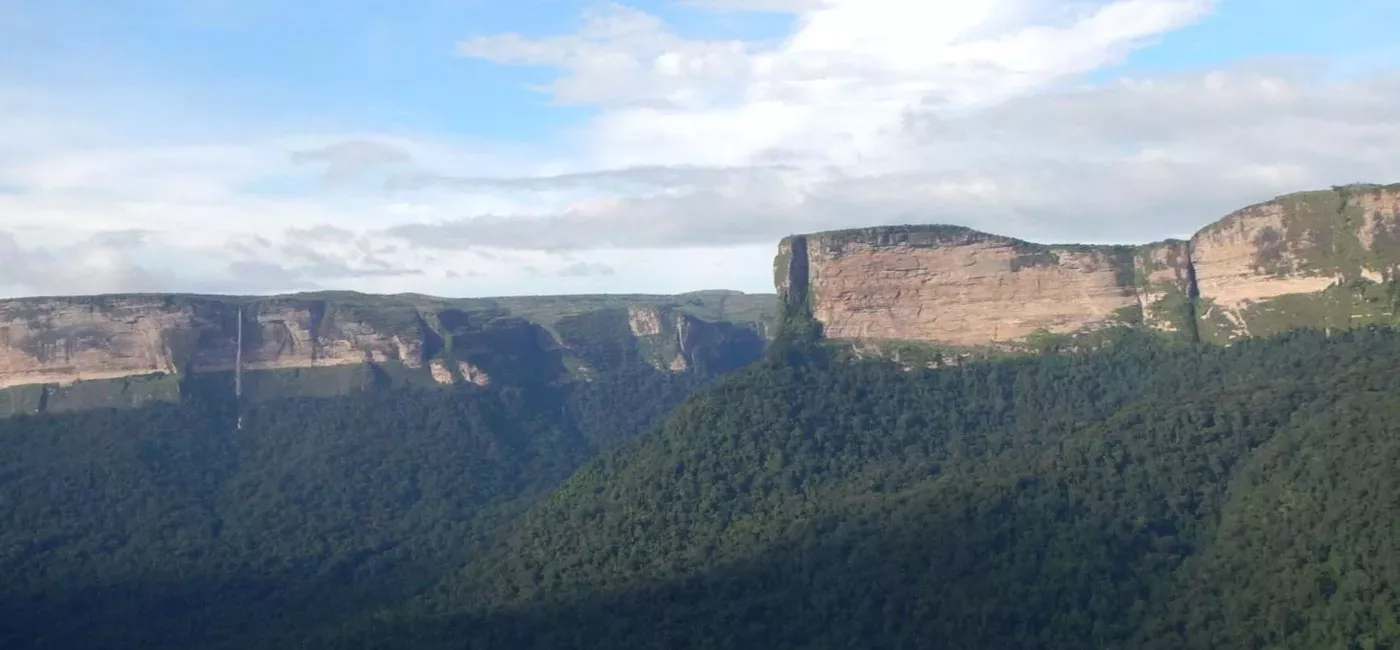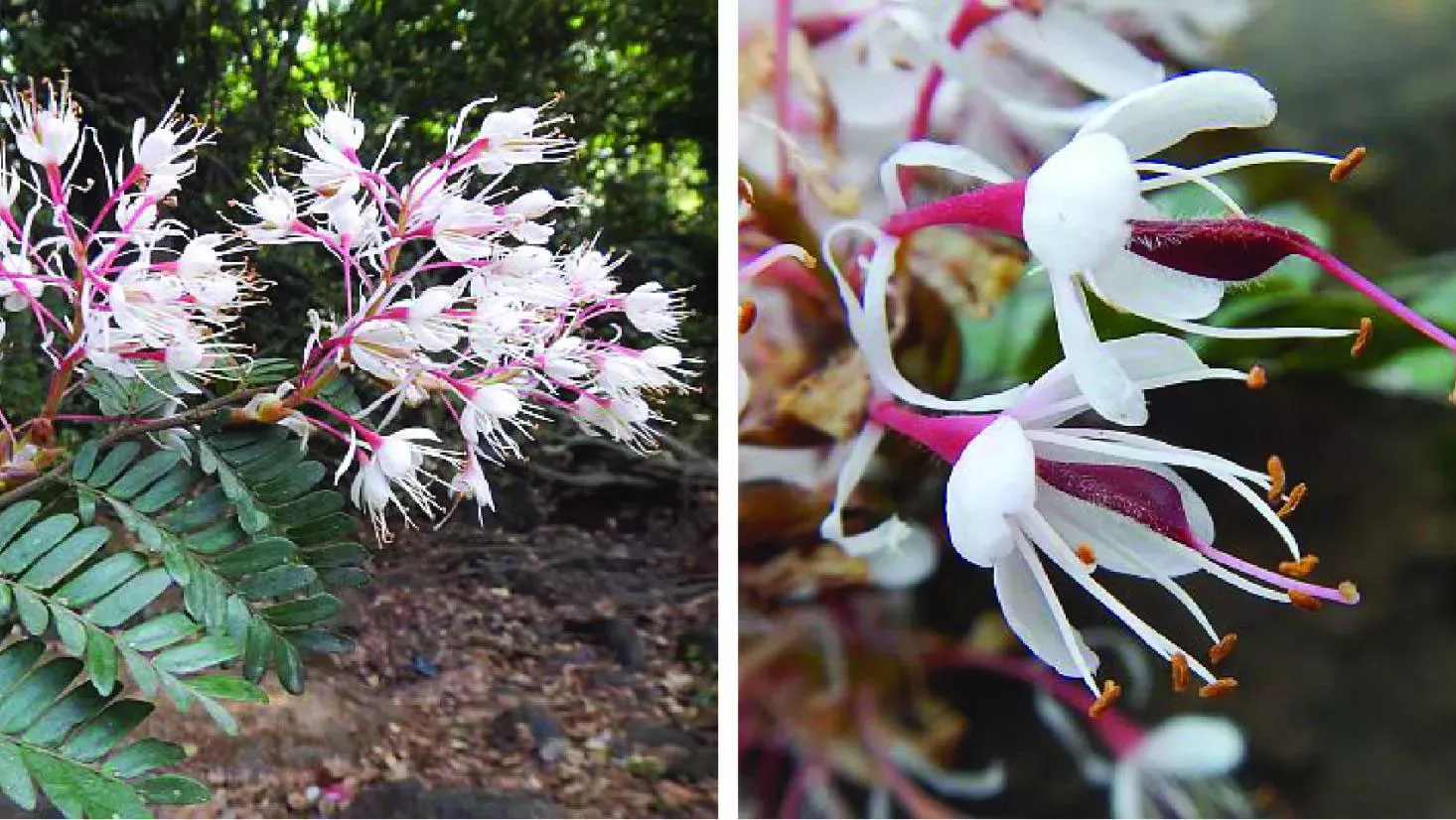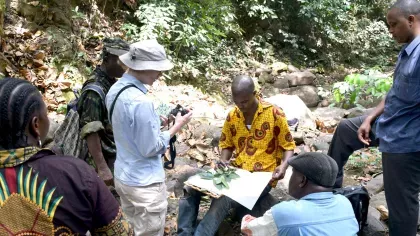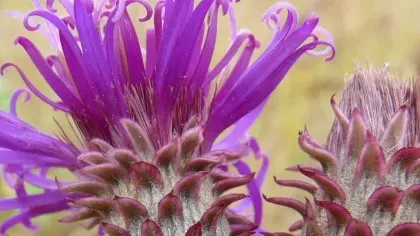7 August 2017
Discovering botanical treasures in Guinea
In this blog post, Xander van der Burgt of Kew reveals some of the discoveries Kew scientists have made since they started working in Guinea, West Africa.

Kew's work in Guinea
Kew scientist Dr. Martin Cheek and his Africa & Madagascar Team are working with the Guinean National Herbarium to unearth some of the botanical treasures that naturally grow in the Kounounkan rain forest and the Benna Plateau in Guinea, West Africa. Their ultimate goal is to have the Kounounkan declared a National Park, partly because of the sheer number of rare and endemic plant species there.

Discovering the Kounounkan forest and the Benna Plateau
The Kounounkan rain forest and the Benna Plateau are found in the Forécariah Prefecture in Guinea, on the southern coast. The large, northern section of the Benna Plateau has just a few small settlements where farmers raise cattle and tend small fields. The southern section of the Benna Plateau is more difficult to access and is largely undisturbed by human activity. Local villagers living in the plains below the plateau rarely go there. On an early expedition in 2016, Kew and Guinean scientists working together were guided by an older local villager up the pathless slopes. It turned out he had only been up to the plateau a few times in his life, and barely knew the way himself!
The Benna Plateau is surrounded by a natural sandstone fortification. Rainwater collects on the plateau during the rainy season and runs off these cliffs, creating massive and incredible waterfalls, hundreds of metres high.
The lower slopes of the Benna Plateau, at the base of the escarpment, are covered in undisturbed rain forest. Known as the Kounounkan forest, it is the largest remaining forest in coastal Guinea – almost all other forests have been cleared for agriculture.
On the plateau itself, the vegetation is mostly made up of grassland. The soils here are either well-drained or swampy. Some areas of forest can be found too, especially in gullies and near small streams.

New plant species on the Benna Plateau
The Kew team have so far discovered several plant species completely new to science. On the southern part of the Benna Plateau, a new species of Gladiolus (Iridaceae family) and a shrubby perennial Melastomastrum(Melastomataceae family) have been discovered. It is thought that both of these species are endemic to the Benna Plateau, so not found anywhere else.
The discovery of a new legume tree species from the genus Talbotiella came as a great surprise to the joint Kew/ Guinea botany team on their latest expedition in April 2017. While walking in valleys on the sandstone plateau to the west of the Benna Plateau, around 1,200-1,600 individual trees were spotted – some trees reaching 21 m in height. When looking at the flowers, it became clear to the team that the trees were completely new to science.

A proposed National Park
The Kounounkan rain forest and the Benna Plateau are being studied by Kew and Guinean scientists as part of the Darwin-funded Guinea Tropical Important Plant Areas (TIPAs) project. Kew is working with the Guinean government in supporting both the Kounounkan forest and Benna Plateau being declared a National Park, affording protection to rare and endemic plant in these areas.


